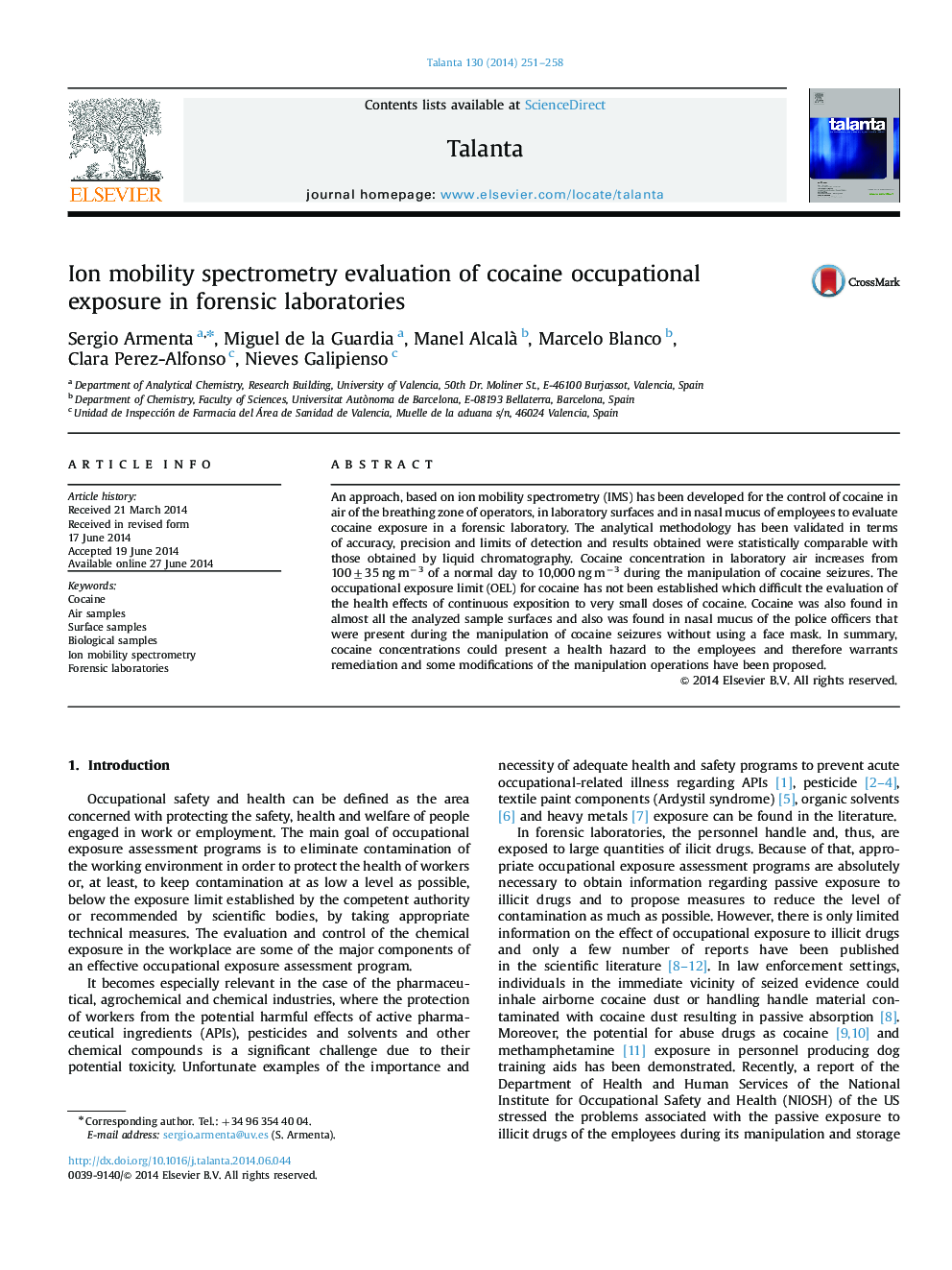| Article ID | Journal | Published Year | Pages | File Type |
|---|---|---|---|---|
| 1243587 | Talanta | 2014 | 8 Pages |
•Cocaine exposure in forensic laboratories by ion mobility spectrometry.•An approach based on air, surface and nasal mucus samples.•Cocaine concentrations ranged from 100 to 10,000 ng m−3.•Cocaine was present in almost all the surface samples analyzed.•Cocaine presence in nasal mucus confirmed the potential hazard to employees.
An approach, based on ion mobility spectrometry (IMS) has been developed for the control of cocaine in air of the breathing zone of operators, in laboratory surfaces and in nasal mucus of employees to evaluate cocaine exposure in a forensic laboratory. The analytical methodology has been validated in terms of accuracy, precision and limits of detection and results obtained were statistically comparable with those obtained by liquid chromatography. Cocaine concentration in laboratory air increases from 100±35 ng m−3 of a normal day to 10,000 ng m−3 during the manipulation of cocaine seizures. The occupational exposure limit (OEL) for cocaine has not been established which difficult the evaluation of the health effects of continuous exposition to very small doses of cocaine. Cocaine was also found in almost all the analyzed sample surfaces and also was found in nasal mucus of the police officers that were present during the manipulation of cocaine seizures without using a face mask. In summary, cocaine concentrations could present a health hazard to the employees and therefore warrants remediation and some modifications of the manipulation operations have been proposed.
Graphical abstractFigure optionsDownload full-size imageDownload as PowerPoint slide
